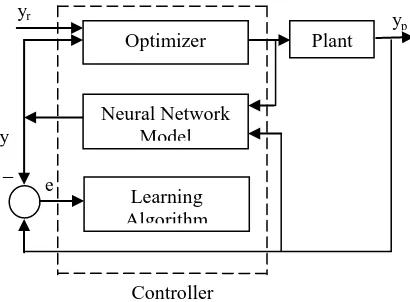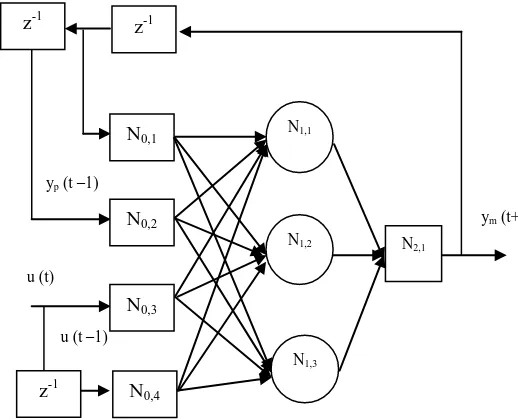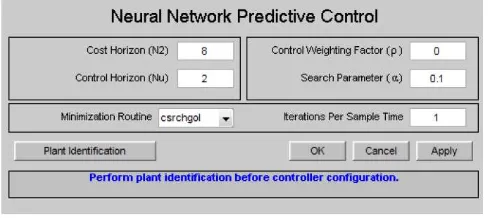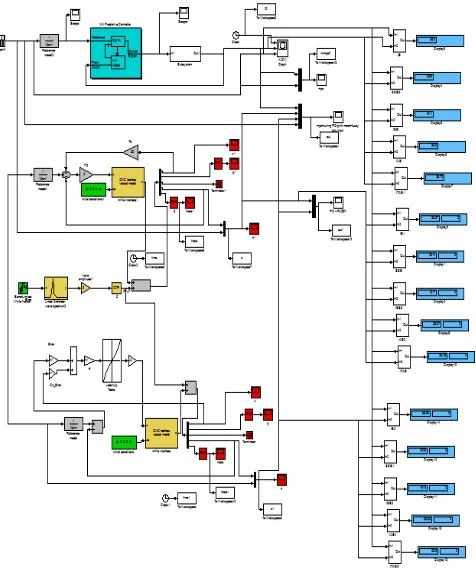A.S.Mohd Nor
1*, S.S.Abdullah
2, M.S.M.Aras
3, M.Z.A Rashid
41
Underwater Technology Research Group (UTeRG), Faculty of Electrical Engineering, Universiti Teknikal Malaysia Melaka, Hang Tuah Jaya, 76100 Durian Tunggal, Melaka Malaysia.
Tel: + 606-5552239, Fax: + 606-5552222, E-mail: [email protected] 2
Department of Electric and Electronics, Malaysia -Japan International Institute of Technology, Universiti Teknologi Malaysia, International Campus Jalan Semarak, 54100 Kuala Lumpur, Malaysia.
Tel: + 603-26154707, Fax: + 603-26910342, E-mail: [email protected] 3
Underwater Technology Research Group (UTeRG), Faculty of Electrical Engineering, Universiti Teknikal Malaysia Melaka, Hang Tuah Jaya, 76100 Durian Tunggal, Melaka Malaysia.
Tel: + 606-5552284, Fax: + 606-5552222, E-mail: [email protected] 4
Underwater Technology Research Group (UTeRG), Faculty of Electrical Engineering, Universiti Teknikal Malaysia Melaka, Hang Tuah Jaya, 76100 Durian Tunggal, Melaka Malaysia.
Tel: + 606-5552276, Fax: + 606-5552222, E-mail: [email protected]
Abstract
In this paper, the modeling and design of the depth control systems using Neural Network Predictive Control (NNPC) for a small unmanned underwater vehicle (UUV) will be described. Underwater vehicles consist of robotic vehicles that have been developed to reduce the risks of human life and to carry out tasks that would be impractical with a manned mission. The design of a depth control of an UUV is described in this paper. The main purpose of the error and execution time. This NNPC will be compared with conventional controller such as PD controller and also by using the Fuzzy Logic Controller (FLC). For the comparison of computational time between this controllers, it can be observed that Fuzzy Logic is faster and neural network predictive controller is the slowest between them. It has been shown that the neural network predictive controller improved the transient response and error measure which shows the effectiveness of the designed controller.
Keywords:
Unmanned Underwater vehicles; deep submergence rescue vehicle; Neural Network Predictive Control
Introduction
In the past decade, underwater vehicles are playing an increasingly important role in the exploration and exploitation of the subsea domain world-wide, with
important contributions to be made in the military, commercial and scientific sectors. Autonomous underwater vehicles (AUV) have matured and become operational assets, useful for a variety of oceanographic and military applications. Small and high performance vehicles have proven adept at a variety of undersea survey, mapping, and measurement tasks. The ability to operate free from tethers, from expensive dynamically-positioned vessels, and without human intervention during the dive sequence have great potential for replacing traditional towed-systems and remotely operated vehicles. More important, it has also become clear that AUV have unique capabilities such as close-in terrain following, multiple vehicle operations, and extremely long endurance.
There are different types of underwater vehicles. Two types of vehicles which is manned and unmanned systems. We are all familiar with the manned systems. They can be described simply as falling into two sub-classes which is military submarines and non-military submersibles such as those operated to support underwater investigations and assessment. The navies of the world utilize a number of different classes of submarines to conduct their missions. Unmanned submersibles also fall in to a number of different sub-classes. The simplest and most easily described are those submersibles that are towed behind a ship. They act as platforms for various sensor suites attached to the vehicle frame. A second type of submersible system is called a Remotely Operated Vehicle (ROV). An ROV is a tethered vehicle. The tether supplies power and communication to the ROV and is controlled directly by a remote operator. A third type of unmanned submersible is an Unmanned Untethered Vehicle (UUV). This untethered vehicle contains its own onboard power, but is controlled by a remote operator via some type of a communications link. An AUV is an undersea system containing its own power
and controlling itself while accomplishing a pre-defined task. A further distinction between the AUV and UUV is that the AUV requires no communication during its mission whereas the UUV requires some level of communication for it to complete its assigned mission.
The ROV linked to a support ship by an umbilical cable which carries power and provide a communication link. ROV is extensively used by the oil industry, often as inspection and repair tools for oil rigs. In these cases there is usually no support ship, the vehicle being deployed from the rig itself. There is an additional problem in that as the vehicle moves through the structure of the rig, the position of the umbilical cable must be known otherwise the vehicle can become entangled. AUVs do not suffer from these undertake missions that would be impractical or impossible with an ROV [1], [2], [3].
Effective control scheme require relevant signal in order to accomplish the desired position and velocities for the vehicle. A suitable controlling method of underwater vehicles is very challenging due to the nature of underwater dynamics [4], [5]. The focus of this project is to control the depth of this vehicle in order to give the desired position. Objectives of this paper are to investigate the existing model of a deep submergence rescue vehicle and to design a neural network predictive controller for a deep submergence rescue vehicle.
Neural Network Predictive Control
The neural network predictive control can be considered as a basic type of model based predictive system in which the model is a trained neural network as shown in Figure 1. It usually consists of four components, which is the plant to be controlled, the desired performance of the plant, a neural network that models the plant, and an optimization process that determines the optimal inputs needed to produce the desired performance for the plant. The neural network predictive control normally optimizes the plant responses over a specified time horizon [6],[7].
Figure 1- Block diagram of neural network predictive control system
The role of neural network model predictor, which uses the error e between the system output yp and the neural network model output ym, as neural network training signal. The nonlinear neural network model is to predict the future performance, determine the control signal u by minimizing cost function, J as in Equation (1) [8].
The main steps of the neural network predictive algorithm are listed as follows:
i. Calculate a desired performance of the plant with a reference model or appointed trajectory. If the value is unknown, keep it constant or use the same value as used in the last time.
ii. Start with the previous control inputs, and predict performance of the plant using the neural network model.
iii. Conduct the optimization analysis to minimize the cost function through calculation of new control inputs.
iv. Repeat steps ii and iii till the optimal result is acquired.
v. Use the first element in the optimal control input vector as the real control input to the plant.
vi. Go to the next series, and repeat steps i until v. Neural network predictive control is a control method that finds the control input by optimizing a cost function subject to constraint. The cost function used to calculates the desired control signal by using a model of the plant to predict future plant output [9], [10].
A fundamental part of this method is the actual optimization problem that obtains future control inputs by minimizing a cost function subject to constraints on the system. Typically, the cost function, J consists of the error between the reference trajectory r and the predicted outputs y in addition to the control effort, u.
N1 is the minimum costing horizon N2 is the maximum costing horizon Nu is the control horizon
will run from N1 to N2 future step. The bound on control horizon is Nu. The second summation contains a weighting
factor, ρ that is introduced to control the balance between
the first two predictions. The weighting factor act as damper on the predicted u(t+ 1).
Neural Network Predictive Control Design of
DSRV
This section illustrates a simple way of controlling a non-linear and 4th order system using neural network predictive control. The design procedure utilizes MATLAB® Neural Network Predictive Control toolbox and was implemented using SIMULINK® version 7.6. The objective of the controller is to maintain the depth of DSRV by adjusted the stern plane.
Since the neural network plant model is used as training controller, so that, the plant should be identified first before training the controller and need to re-identify the plant when controller training is not satisfactory.
The neural network plant model has one hidden layer and the numbers of neurons of this layer is choose to be three neurons. These parameters are obtained by using trial and error method. There are two number of delayed plant inputs and two number of delayed plant outputs. The structure of neural network plant model is shown in Figure 2.
Figure 2- Structure of Neural Network Model
The plant model training begins. The training proceeds according to the training algorithm. After the training is complete, the response of the resulting plant model is displayed as in Figure 3 and there also has a plot of validation data as shown in Figure 4.
Figure 3- Training Data for Neural Network Predictive Control
Figure 4- Validation Data for Neural Network Predictive Control
All parameters for the cost function, J are obtained by using trial and error method. The control weighting factor, ρ choose to be zero, so that the cost function only concern to the error between the reference trajectory r(t) and the predicted outputs y(t). The search parameter selects to be 0.1 for the best performance. As the search parameter decreased, the speed to compute the simulation is increased. If the search parameter is too big, then it might miss the minimum altogether. Cost horizon, N2 is selected by using trial and error and it can be conclude that, cost horizon equal to 8 give the minimum error.
yp (t –1)
u (t) z-1
u (t –1)
z-1
ym (t+1)
N1,3
N2,1
N0,1
N0,2
N0,3
N0,4 z-1
N1,2
Result
The controller is applied to control the depth of DSRV. To assess the viability of the method, the system is simulated using MATLAB/Simulink. The controller was firstly designed based on mathematical modelling as discussed in part 2. Once the parameters of the controller are identified, it was then interfaced with the SIMULINK block diagram. The depth performance in term of error and computational time are discussed in this section. The vehicle was commanded to dive to the depths of 45 ft to 30 ft and continues up to 10 ft and returns to 30 ft. The depth performance for Neural Network Predictive Control was discussed in terms of error and execution time. Figure 5 show the block diagram neural network predictive control for deep submergence rescue vehicle (DSRV).
Figure 5- Block Diagram Neural Network Predictive Control for Deep Submergence Rescue Vehicle (DSRV)
Figure 6- Neural Network Predictive Block
Figure 6 shows the window for designing the model predictive controller. Figure 7 shows the response of the system when the neural network predictive control was used. From the figure, the system has been successfully stabilized with a zero of overshoot. In simulation, the vehicle was commanded to dive to the depths of 45ft, 30ft and 10ft. From the result, the DSRV plant models manage to follow the desired input with good settling time and zero steady state error.
Figure 7- The simulation output for depth.
Table 1 shows the depth performance for Neural Network Predictive Control in terms of error and execution time.
Table 1-Depth performance for Neural Network Predictive Control in terms of Computation Time, Sum Square Error
(SSE), Integral Absolute Error (IAE), Integral Time Absolute Error (ITAE).
Item Performances
Computation Time 452.10 s
Sum Square Error (SSE)
Integral Absolute Error (IAE)
1332 Integral Time Absolute
Error (ITAE)
From the table it can be seen that the depth response of the neural network predictive control achieves a good transient and steady state performance. But in term of execution time, neural network predictive controller gives quit slow response. This observation is consistent with the fact that neural network predictive controller use only first element of input trajectory applied as the input signal to the plant. Thus, the output measurement, prediction and input trajectory determination are repeated for the whole cycle.
Comparison with PD controller and Fuzzy
Logic Controller
Figure 8- Comparison with FLC controller and PD controller
Figure 9 - DSRV with Neural Network P redictive Controller, PD Controller and Single Input Fuzzy Logic
Controller
The above simulation results demonstrate the comparable steady state performance. The performance indexes are summarized in Table 2. From the table it can be seen that the depth response of the neural network predictive control achieves a better transient and steady state performance than PD controller and FLC. For all three different types of error measure, neural network predictive control gives the smallest error. For example, neural network predictive control gives 1332 of integral absolute error (IAE), PD controller gives 2014 of IAE and FLC gives IAE of 2647. For fuzzy logic controller, the transient response is obtained after a lengthy complex tuning processes of fuzzification, defuzzification and inference for 49 rules.
Table 2- Comparison results
An advantage of FLC over other controllers is the computational time which is the time required to compute the simulation. Table 3 shows the comparison of computational time between neural network predictive controller, PD controller and single input fuzzy logic controller. It can be observed that FLC is faster than PD controller and neural network predictive controller is the slowest between them.
This observation is consistent with the fact that neural network predictive controller use only first element of input trajectory applied as the input signal to the plant. Thus, the output measurement, prediction and input trajectory determination is repeated for the whole cycle. On the other hand, FLC only required a simple look-up table.
Table 3 – Computation results
Conclusion
The Neural Network Predictive Control has been successfully designed and implemented for the deep submergence rescue vehicle system. The depth performance in term of error and computational time are observed in this paper. The result clearly shows that Neural Network Predictive Control gives good response for steady state performance but need longer execution time to complete the simulation.
Acknowledgment
The authors gratefully acknowledge the continuous support from Universiti Teknikal Malaysia Melaka (UTeM) for UTeM Underwater Technology Research Group (UTeRG) through various grant provided to the research group.
References
[1] R.K.Lea. Control of a tethered Underwater Flight Vehicle. PhD Thesis. University of Southamption, May 1998.
[2] Fossen, T.I.: Guidance and Control of Ocean Vehicles. Wiley, New York, 1994.
[3] D.R. Yoerger and J.J.E. Slotine. Robust Trajectory
Control of Underwater Vehicles”. IEEE Journal of Oceanic Engineering, Oct 1985: pp 462-470.
[4] Kashif. Intelligent Control Of Diving System Of An Underwater Vehicle. Master Thesis. Universiti Teknologi Malaysia, 2009.
[5] K.Ishaque, S.S.Abdullah, S.M. Ayob and Z.Salam. Single Input Fuzzy Logic Controller for Unmanned Underwater Vehicle. J Intell Robot Syst Springer Science, 11 January 2010.
[6] G.M. Zeng, X.S. Qin, L. He, G.H. Huang, H.L. Liu, Y.P. Lin. A neural network predictive control system for paper mill wastewater treatment. Engineering Applications of Artificial Intelligence 16, 2003: 121– 129.
[7] V.S. Kodogiannis, P.J.G. Lisboa and J. Lucas. Neural Network Based Predictive Control Systems For Underwater Robotic Vehicles. IEEE Journal, pp369-376.
[8] Maciejowski, Jan M., “Predictive control : with
constraints”, Harlow England: Prentice Hall, 2002. [9] C.V. Caldwell, E.G. Collins, and S.Palanki. Integrated
Guidance and Control of AUVs Using Shrinking Horizon Model Predictive Control. IEEE Journal, 2006.



